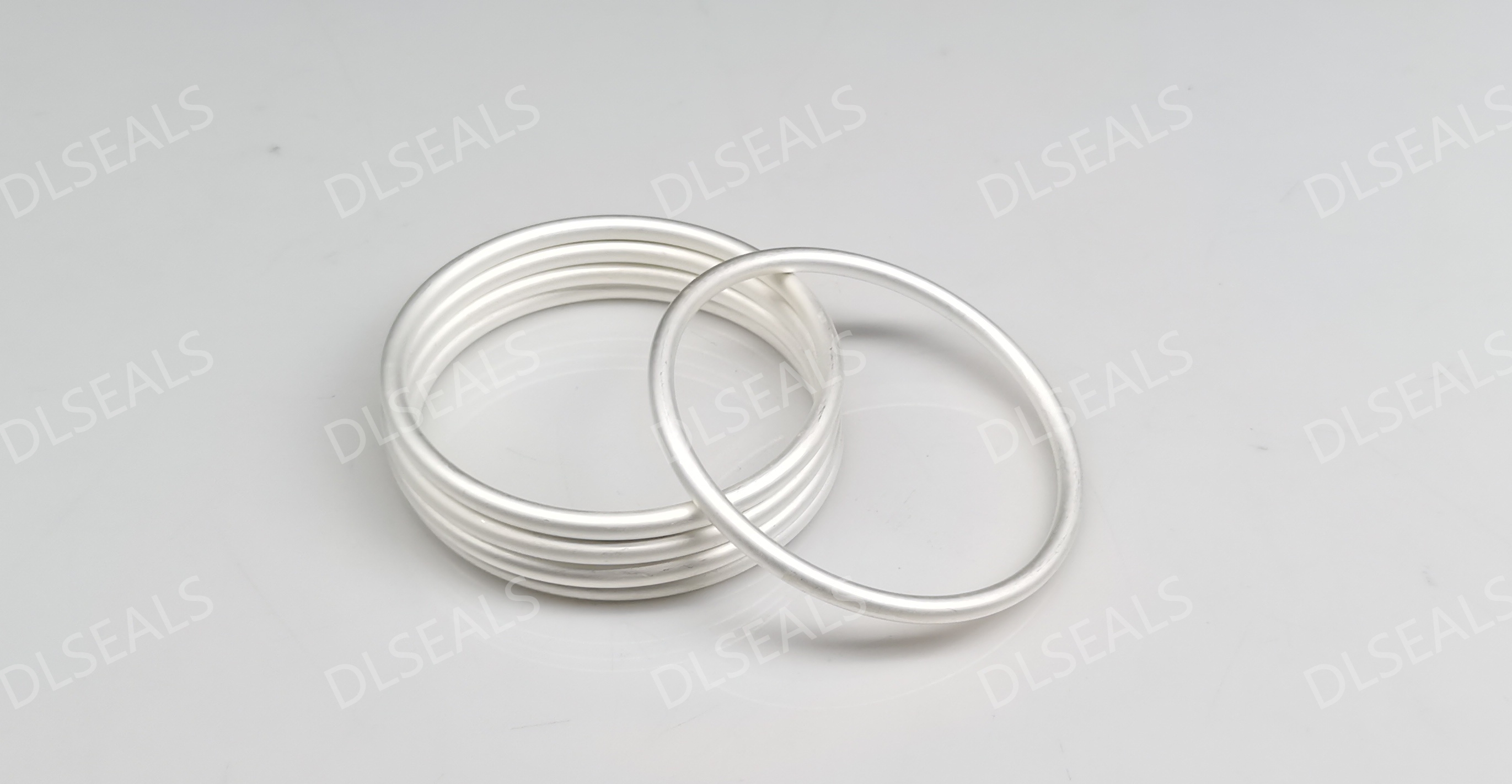
Metal O-rings are widely used in various industrial fields, mainly for sealing and leak prevention. According to different structures, metal O-rings can be divided into two types: hollow and solid. This article will explore the characteristics, advantages and disadvantages and applicable scenarios of these two types of O-rings in depth to help engineers and purchasers make more informed choices in practical applications.
1. Structure and Materials
1.1 Metal Hollow O-Rings
Structure: Metal hollow O-rings usually consist of a metal ring with a hollow inner part to form a ring structure. This design enables it to have better deformation ability when under pressure.
Material: Generally, stainless steel, aluminum alloy and other materials are used, which have good corrosion resistance and strength.
1.2 Metal Solid O-Rings
Structure: Metal solid O-rings are made entirely of metal materials without internal hollow parts. This design provides higher sealing strength and durability.
Material: Stainless steel, copper, alloy and other materials are also used, with excellent physical properties.
2. Sealing performance
2.1 Sealing performance of hollow O-rings
Advantages:
Due to the hollow structure inside, it can achieve better compression and adaptability when under pressure, and is suitable for dynamic sealing.
In some applications, it can effectively resist vibration and impact and improve sealing stability.
Disadvantages:
Compression deformation may occur under high pressure, resulting in seal failure.
Not suitable for extreme environments with high temperature or high pressure.
2.2 Sealing performance of solid O-rings
Advantages:
Provides higher sealing strength and is suitable for high pressure and high temperature environments.
Excellent performance in static sealing applications and stronger wear resistance.
Disadvantages:
For dynamic sealing, it may lack elasticity and adaptability.
High precision is required during installation, otherwise it may cause seal failure.
3. Application scenarios
3.1 Application of hollow O-rings
Hydraulic system: used as a dynamic seal in hydraulic cylinders and pumps, which can effectively cope with pressure changes.
Pneumatic equipment: in cylinders and valves, it provides good sealing performance and withstands vibration.
Flexible seal: suitable for sealing environments that require a certain degree of elasticity, such as the suspension system of automobiles.
3.2 Application of solid O-rings
High-pressure equipment: widely used in high-pressure sealing occasions in the petroleum, chemical and other industries.
Static sealing: provides strong sealing in static sealing environments such as casings and flange connections.
High-temperature applications: suitable for high-temperature steam, hot water and other occasions, with excellent performance.
4. Cost and economy
Hollow O-rings: usually low cost, suitable for large-scale applications and non-extreme environments.
Solid O-rings: despite the higher cost, their durability and sealing performance can bring longer service life, reduce maintenance and replacement frequency, and are suitable for demanding industrial environments.
Conclusion
Metal hollow O-rings and metal solid O-rings have their own advantages and disadvantages, and their applicable scenarios are also different. Choosing the right O-ring can not only improve the sealing performance of the equipment, but also reduce maintenance costs. In practical applications, comprehensive consideration should be given to factors such as working conditions, media properties, pressure range and temperature requirements to achieve the best sealing effect and economic benefits.
[DLSEALS kindly Reminder] Sealing issues? Turn to DLSEALS! As a sealing component manufacturer, we specialize in customizing sealing components, providing a full range of services from design, research and development, production, testing, and more. If you have more information you’d like to know, feel free to contact us directly. DLSEALS’s product experts are dedicated to serving you!
Post time: Sep-26-2024
